We often stick the tag of crap but good to film cameras. As much as I love shooting film I’m not a total Luddite and have been known to mix it up with digital. But what do budget Digital of yesteryear work out like ?
And what better place to start is my first digital – the Olympus Camedia C-120 (aka D-380). It looks lousy compared to even a modern entry level smart phone camera with Fixed focus and the sheer luxury of 2 Mega Pixels. But why did this camera travel around the world.
2002 was a busy year for Olympus and me . It marked the end of the OM series of film camera but the birth of the Four Thirds system. Great film cameras like the flagship mju-V and the iS-500 were launched. On the digital end camera like the X-1 were taking advantage of the new x-D storage medium.
The C-120 is not one of these groundbreaking cameras.
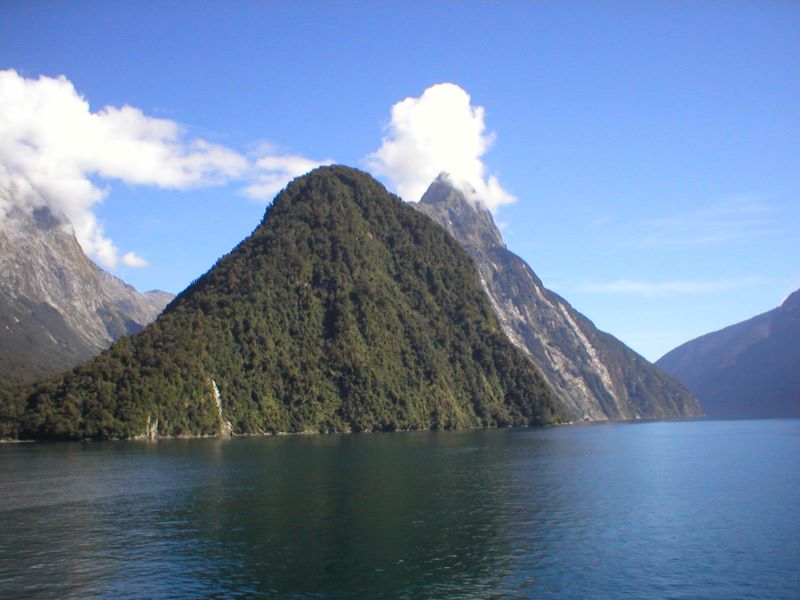
Back to the future
My life was pretty hectic I’d recently bought a house and moved in with the lady whom is now my better ‘alf. Photography had become a way of documenting our life not a thought process. Although consumer digital cameras had been around for more dcade film sales had continue to grow until the peak in 2001. But by then digitals had advanced enough to compete for market share.
The C-120 was cheap and dependable. i paid some where around £150 for it. I could have paid more of the likes of the Canon Sure shot G2 but this was way cheaper
Although it travel round the world with me I ended up replacing it the following year with ironically a Canon IXUS 400 digital
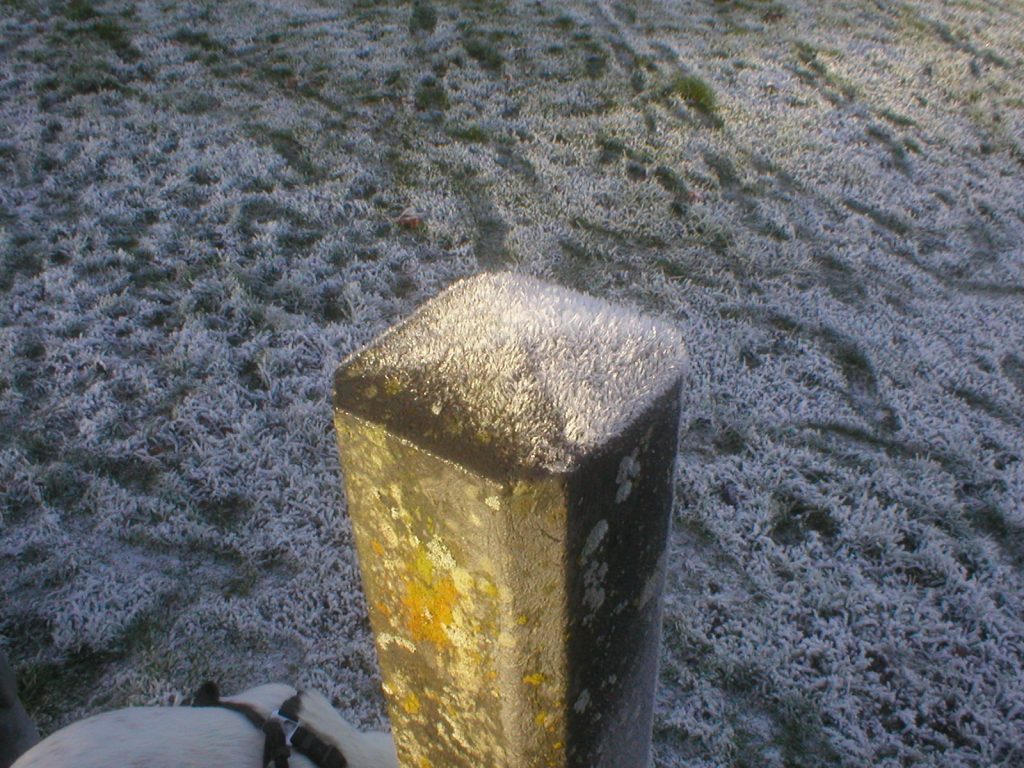
Core spec
(a) Optics
This is a 2 megapixel camera with a 1/3.2″ sensor behind a fixed focus 4.5mm 1:4 lens. This is equivalent to a 35mm lens on a full frame camera. The lens is a 5 element construction in 5 groups and is described as an Olympus lens (not Zuiko). Focus range according to the manual is 0.6m to infinity. The figures actually add up to the expected values produced in online DoF calculators. In addition a small switch allows you to enter a macro mode with a focal range of 0.25-0.6m.
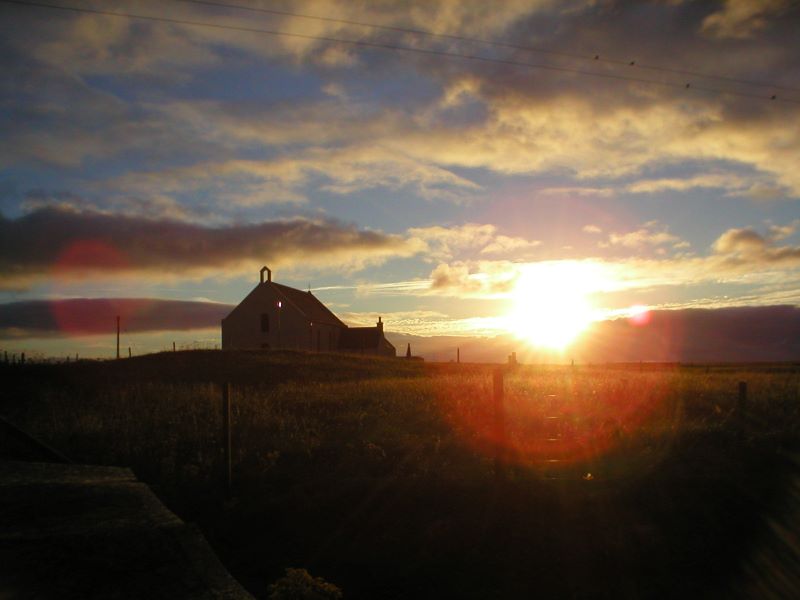
(b) Exposure
Exposure is automatic. The camera manual lists just 2 apertures (f/4 & f/8) and I honestly think the latter is only engaged when you slide the macro switch mechanically. Shutter purports a range of 1/2-1/2000 sec but in night modes up to 1 second is possible. ISO range data is not given in the manual but it seems to be only between 100-200 ISO on testing. This limits the camera severely in low light. The camera has auto white balance (with manual override).
The camera does offer 2 metering modes ESP and spot. I’m not clear if ESP is centre-weighted or matrix. In the manual it is described as ‘Meters the center of the viewfinder and the area around it separately to obtain the optimum exposure.‘ There is an option to adjust EV (±2EV in 0.5 steps).
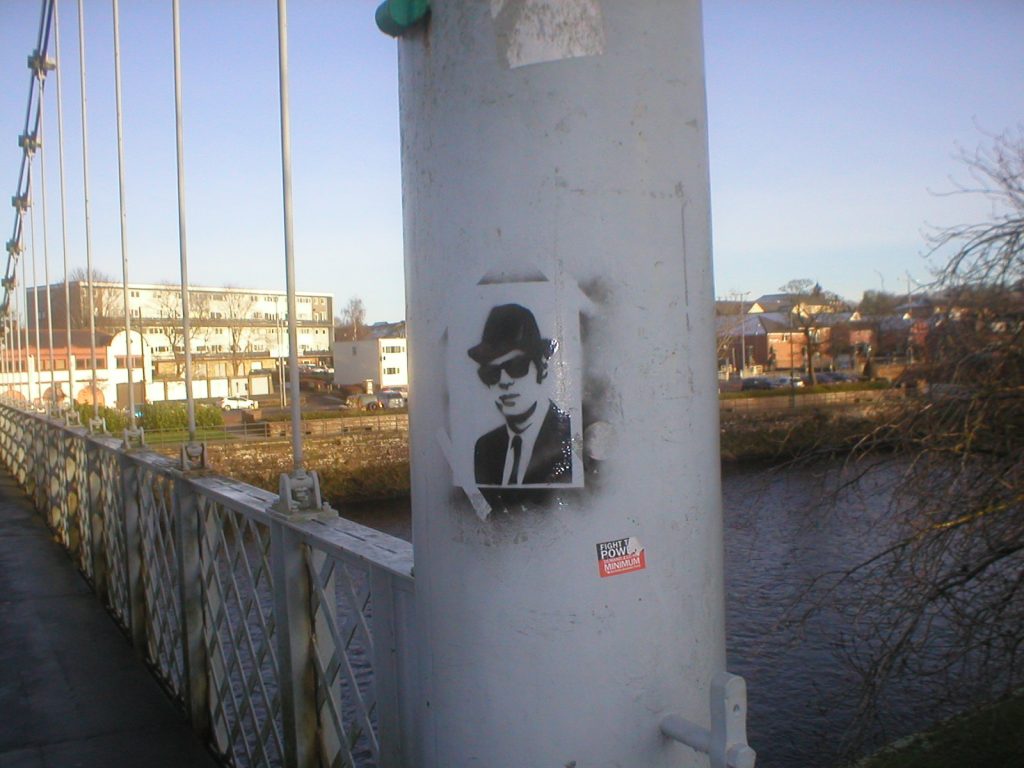
(c) Image Size
The camera highest quality mode (SHQ) takes photos in 1608×1200 pixel size. However this is not the default. The files this produces (~1MB) are too big for even one shot in the internal storage. HQ mode which has a a slightly smaller pixel count (1600×1200) is used. It produces much smaller files (~0.35-0.4MB) indicating there is more compression going on. 2 lower quality & resolution modes are also available.
There is no RAW option. You get jpeg and that’s it.
(d) Storage & Display
Data is stored on either a 1MB internal storage or the long dead Smart Media format. These flash memory cards arrived in 1995 and were popular at the turn of the century. However they were limited to 128MB maximal size and the cards were more prone to digitally wearing out than better tech like SD. You’re unlikely to get new cards and they are relatively expensive (you can often buy a new 128GB SD card for less than a used 128MB Smart media card).
But you’re playing on time limited resources. That said the 64MB card I got back in 2002 is still working.
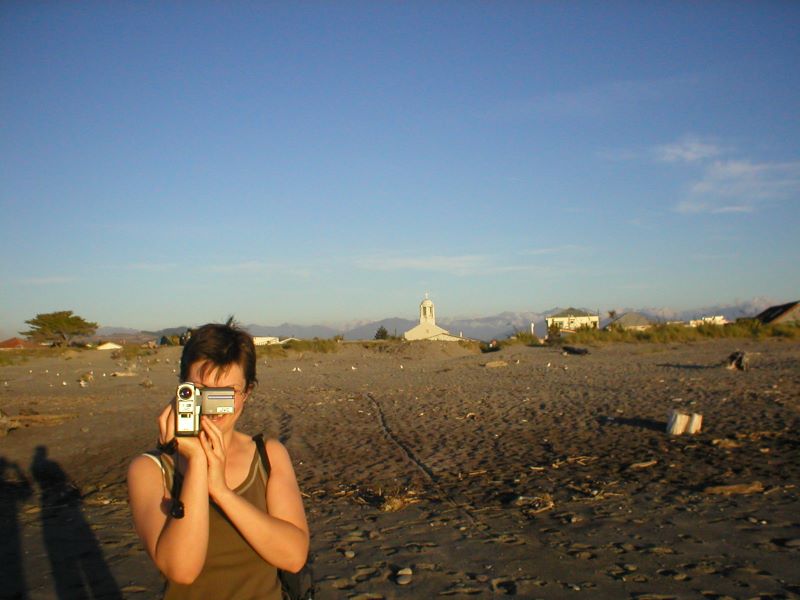
There’s a 1.6″ TFT color LCD display, 60,000 pixels on the rear and a built in flash (up to 2.5m). In review mode you can crop your shots or turn ’em B&W or sepia. You can also ste protection against accidental deletion.
(e) Power & Flash
Power is from 4xAA batteries. Flash has 5 modes – Auto (default), Red-Eye Auto, Fill In, flash Off, Night mode & Night mode with red eye. Not GN data is given but the range is ~2.5m according to the manual.
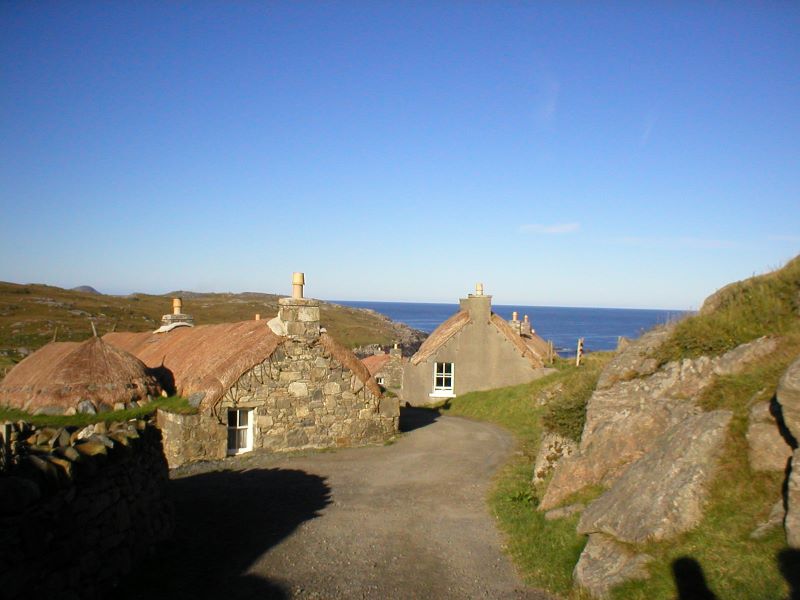
Looks & Build
The camera is your standard plastic block common for both film and digital camera of the era. It’s done in Champagne silver and has a sliding door covering the lens like many other Olympus cameras like the mju series. It is bulky compared to high end cameras but actually similar sized to the rubbish Superzoom 80s.
I’ve taken this camera literally around the world and up mountains but it has worn pretty well. There’s some scuffing on the body and minor grot in the viewfinder. It’s not the prettiest but it has lasted.
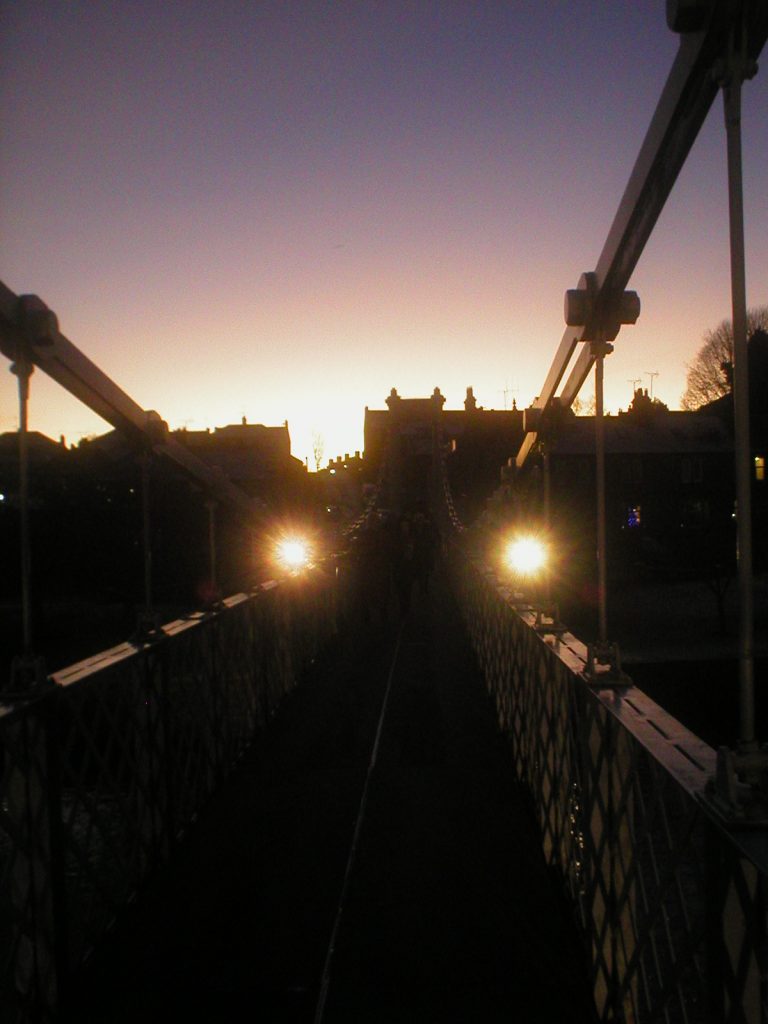
Bar the shutter and the macro switch all the controls are on the rear as shown below
In Use
Like many cameras in the class the camera is aimed to default to core setting on use but you do have some mode control
(a) Simple shooting
Load some AA batteries and stick in a Smart media card. You’ll be pretty good to go (although if used the card might need to be formatted in camera first)
The camera is powered on by sliding open the lens cover. There a beep and a delay whilst the ready LED flashes beside the viewfinder. When this goes out you’re good to go.
By default you compose using the simple viewfinder. This has just a centre crosshair. Alternative you can turn on the LCD for live preview. By default the LCD only comes on briefly at start to show you your remain shots, battery status and quality mode but no preview. It remains off until after a shot is taken when you get a few seconds to review.
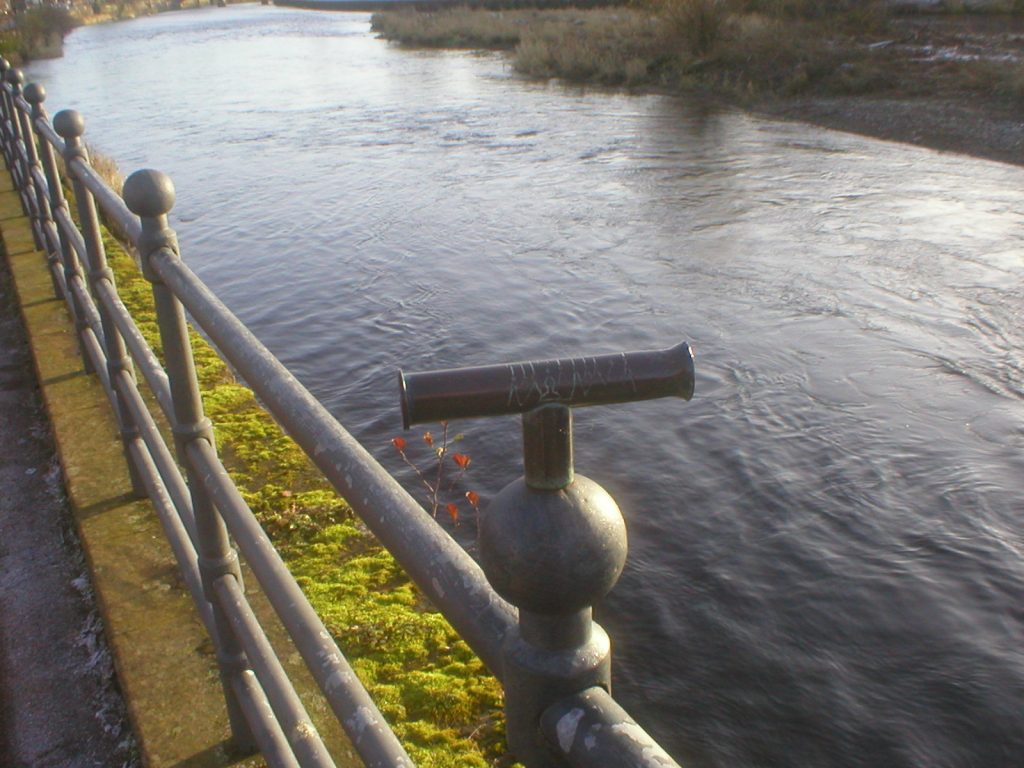
You can manually turn it on for live preview with the monitor button on the rear. It is not a great screen. Too small and cluttered and the resolution ain’t great but it is from 2002.
Whatever you use to compose you press the shutter and wait. I find it a handy time to think of what to have for tea or watch on telly. There’s at least a second of lags before the satisfying mechanical click and the annoying (but disable-able) beep. this is no camera for action.
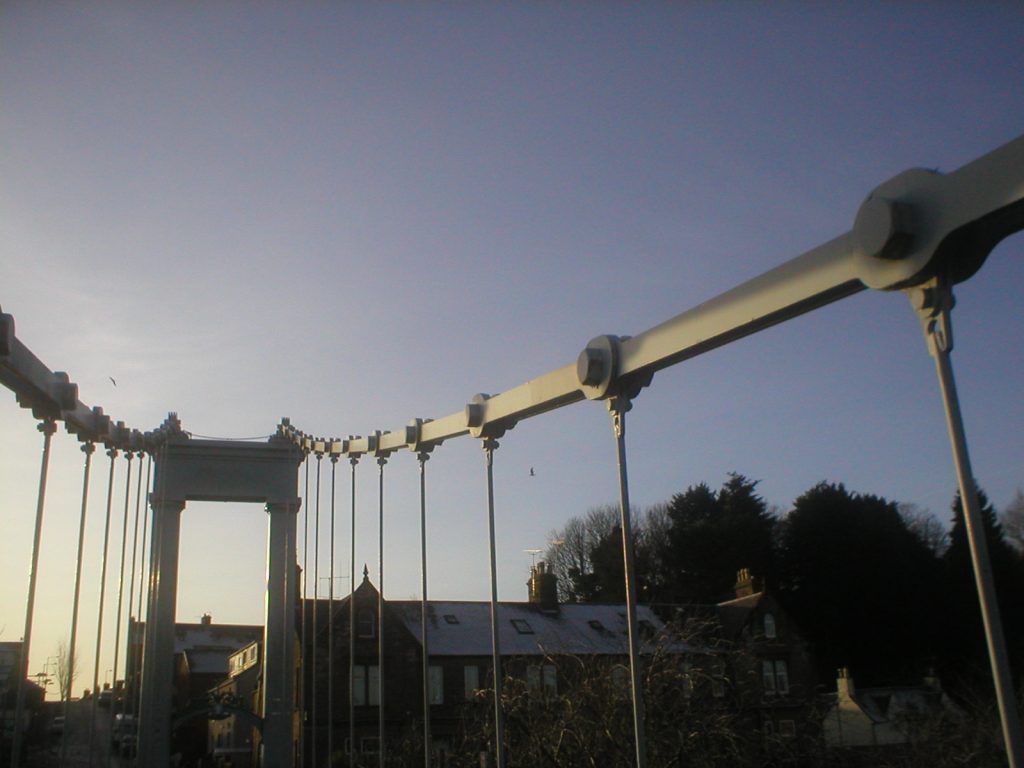
In simple use you can switch between the 5 flash modes and turn on the self timer. Flash kicks in around EV100ISO 11 but that as we’ll see is for good reasons.
If you are a muppet you can use the 2.5x digital zoom – Don’t. You are just cropping the image in camera.
(2) Advanced shooting Choices
The camera has menu mode allowing to do the usual house keeping of setting the camera clock (2000-2099) formatting media and adjusting display brightness. You can as discussed adjust image quality, White Balance (Tungsten shooting anyone ?) and EV. This is all done via the rear buttons on the display. Worth noting most of these will be reset as soon as you close the camera unless you disable the reset option.
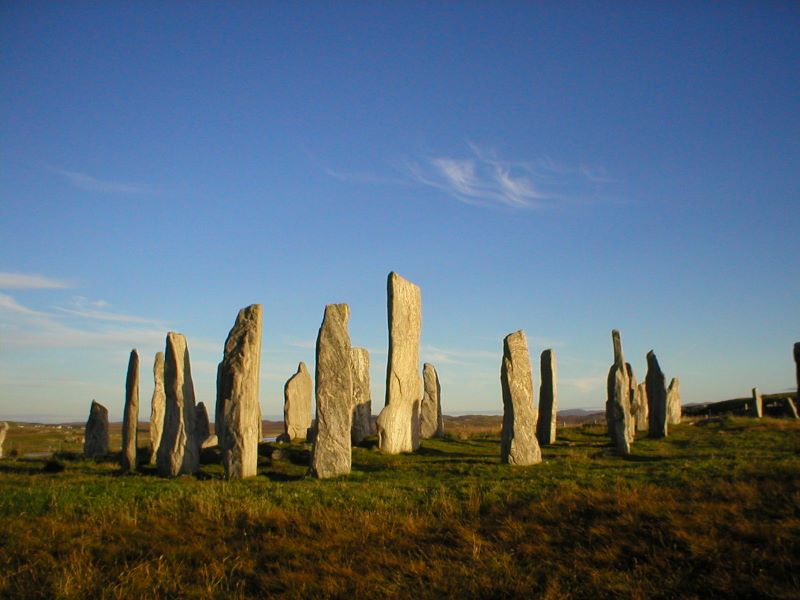
You can also switch from single to continuous shooting. The latter depends on image size (for HQ about 8 frames at 1.5fps). There is also an option for video. Now I’d argue this was the killer app for digital – the ability to switch to video. But the C-120 can’t even do VGA resolution and files have no sound. Video is recorded in now discontinued QT format. You’ll still find converters but it is a pain.
Lastly there are 3 modes. You get the ubiquitous selfie mode (use in conjunction with macro), a 2 shots in 1 frame mode (aka Half frame) and the panorama mode. That is if you’re using an Olympus branded card. If not the Pano feature ( which allows you to overlap individual shots) is greyed out. That’s just pants.
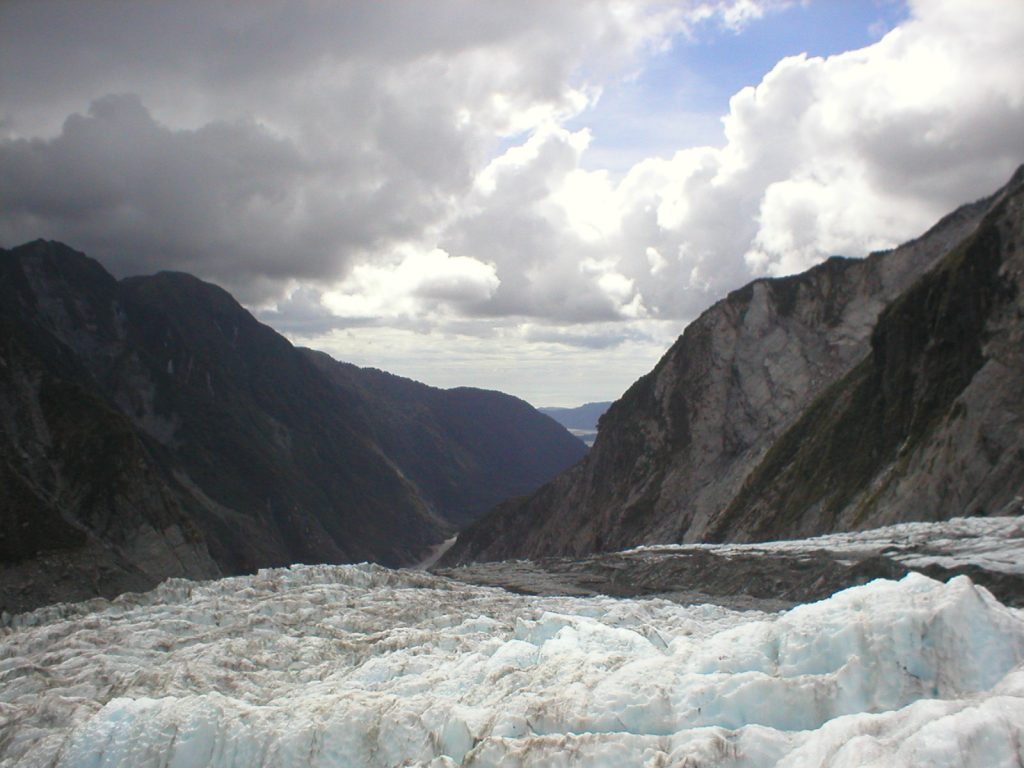
Results
Look this is gonna be pants by any modern standard. 2 MP is woeful even by modern budget smartphone standards and fixed focus just seems a weird choice. When I open shots on my laptop the weakness seem rapidly evident.
But bear in mind this camera was intended to make 6×4 prints or be used for web images and was typical entry level fodder,
The good news the radial distortion is minimal (slight barrel). But there is some fringing. and sharpening artefacts if zoomed in on.
There is some softness. Better than your average disposable but compared to cameras like the VUWS or even the Harman Reusable It’s resolution is at fault for much of this. Take this shot.
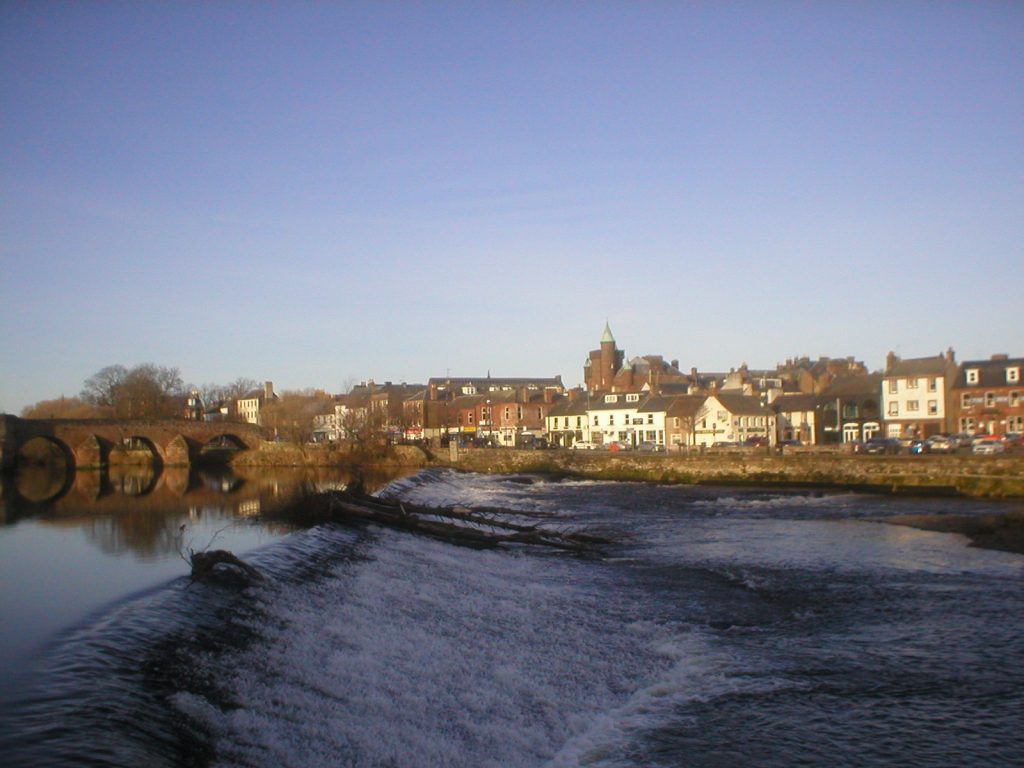
If we zoom into this and a similar SHQ shot and compare it to a 6MP scan of roughly the same shot caught on the Harman you get
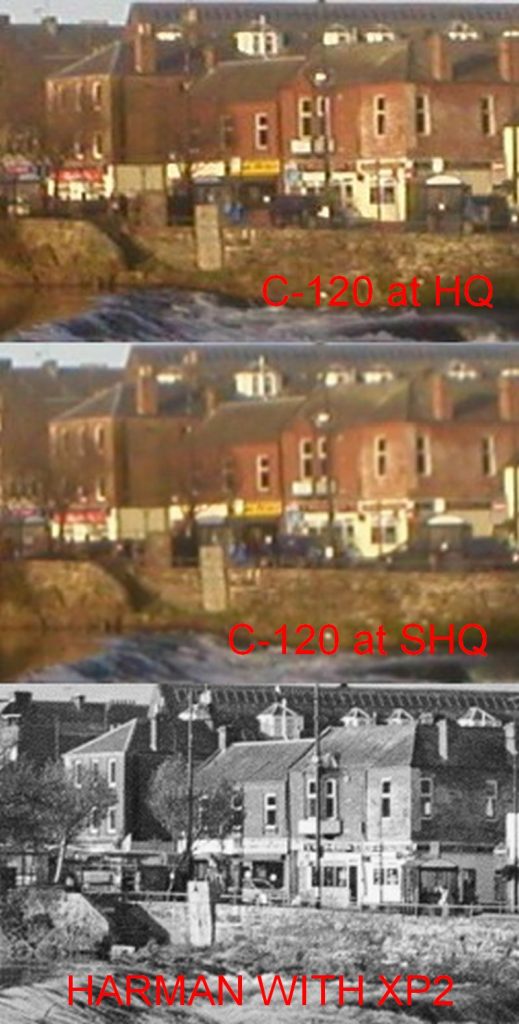
Okay they’re all not great and yes I’m comparing colour and B&W but the Harman is sharper. That may be down to the resolution but..
What’s also striking is there is no significant advantage shooting SHQ over HQ
The camera softens off centre and there is a bit of vignetting going on. The lens flares badly unless straight on.
Exposed Limits
The camera is also useless in low light. I guess that’s why it pushes the flash on. There’s no image stabilisation. And it tells. The shot below loses out both to poor latitude and shake.
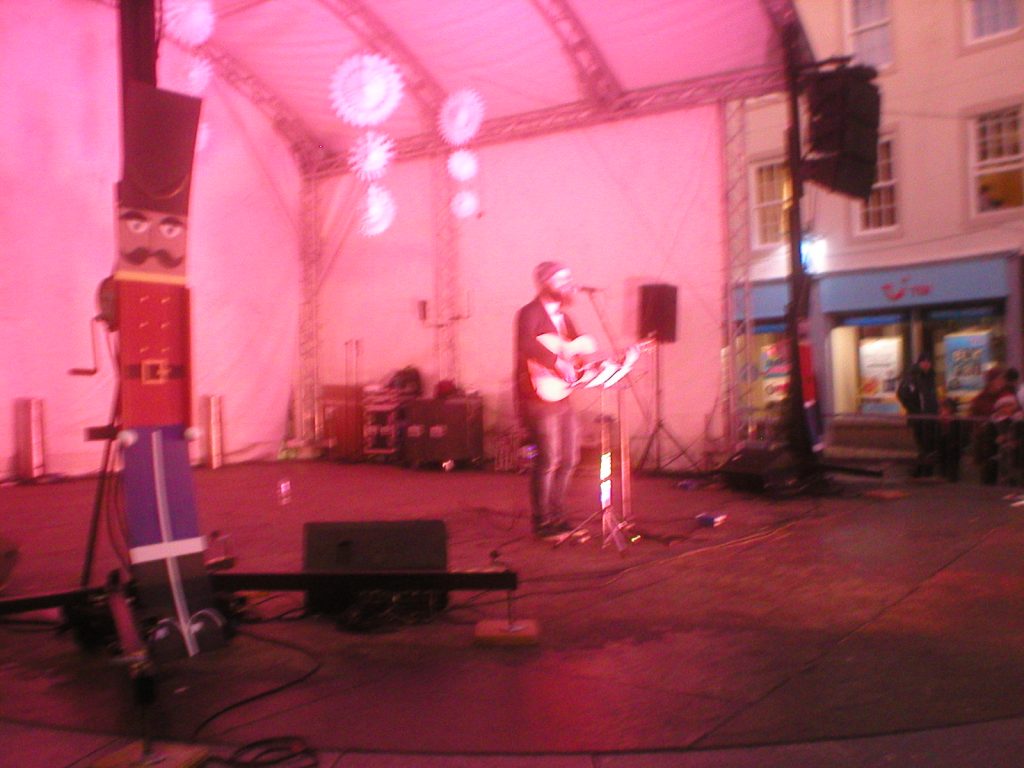
I make the point re image stabilisation as my Mobile took this shot. It also pegged at 200ISO but benefited from AF, 2 stops wider aperture and image stabilisation.
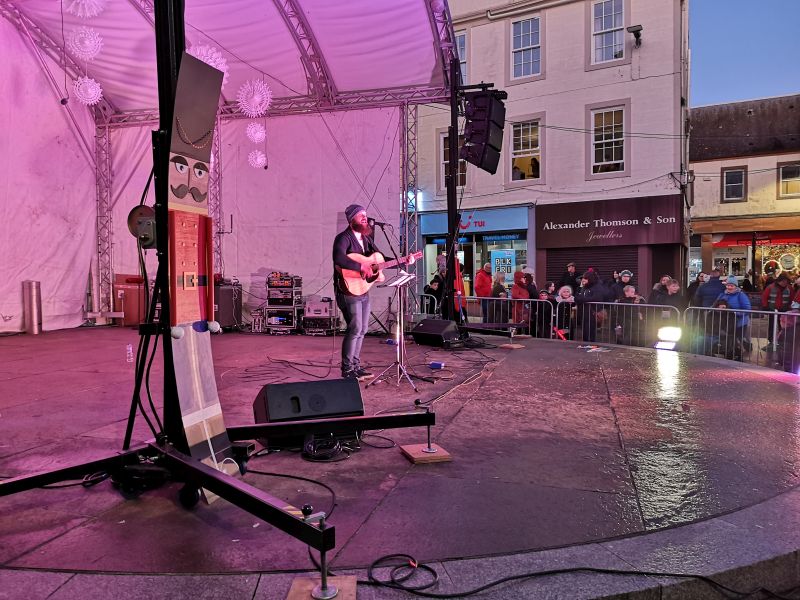
An issue with digital is exposure latitude and not surprising this 2002 number is pretty bad
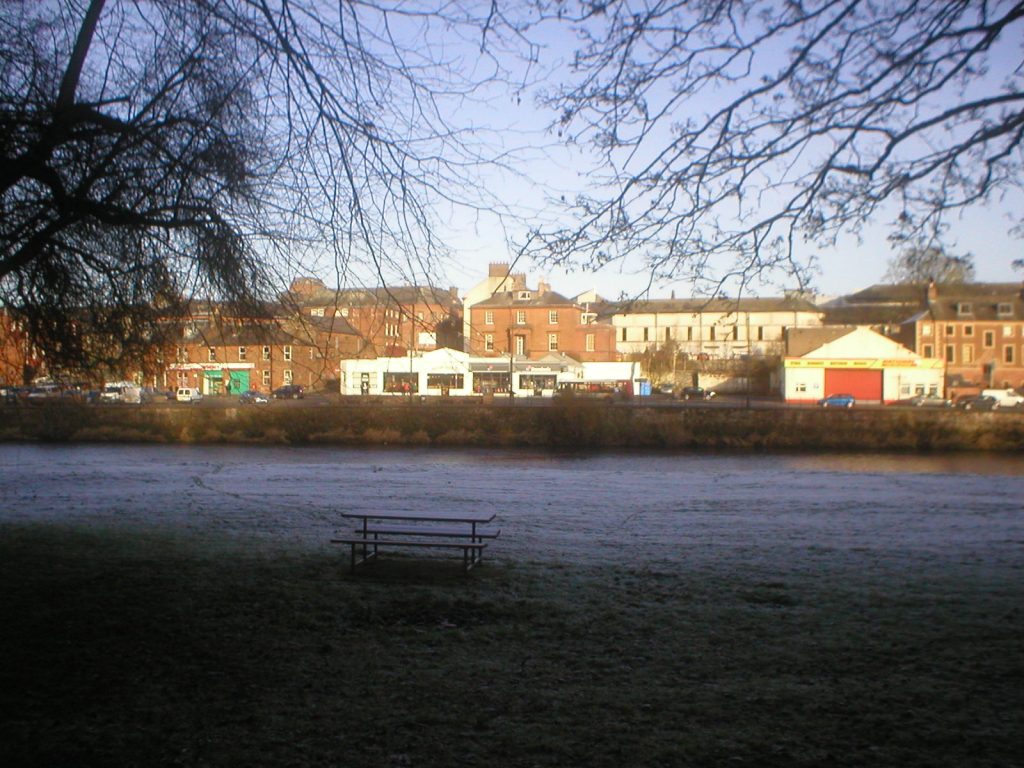
It also blows up bright lights although not quite to Y35 levels
So not great but…..
I’m also an advocate for saying the best camera is the one in your hands and that’s true here

The year I got the camera we went to the Outer Hebrides. I got a a great evening and a lucky shot at Callanish as the sun set on Midsummer’s day. A few months before that we travelled to NZ and it served as well enough.

Conclusions
Can I recommend this ? Not really.
Is it awful ? Well yes and no.
In 2019 the image quality is just crap and doesn’t really have a lo-fi edge to it. Let’s be honest the images are a bit soft when seen at full resolution. Latitude is crap and the storage media is a dead duck. The Yashica Y35 is way more capable. And that says something.
That said I think it more dependable in its output than the Vivitar T324N a camera that you can still buy new in box
But this was typical by 2002 entry level standard. For web use it’s okay and yes you can get useable 6×4 but they’re s far as you can go
I just wish I’d got the G2
But then I remember most of the so called crap film cameras I own can do better than this ( I hate the Harman but it shoots better)
DPReview actually reviewed this in the day (and gave it 4 out of 5)


Great article, and thanks! Many of your shots look pretty nice.
My experience with ‘old’ digital is that below 3mp results are often unsatisfactory. But, by 3mp, with a good camera, you start getting much better pictures than with a ‘crap’ film camera. And -you can purchase units costing upwards of $800 new for a tenth of that
Alan, the G2 was my first digital camera and it would have served you well in your world travels. But originally it cost far more than your Olympus and from what I’ve been able to glean from a 2001 review it was £750. Then there was the cost of CF memory cards; I recall the 1GB IBM Microdrive was around £199!!!
We’ve tended to lose sight of what early digital cameras cost. That £750 equates to £1,218 and £199 to £323 at 2018 prices using the BoE inflation calculator. Given what we can get today in a digital camera costing around £1,200, the cost of present day digital cameras is not unduly expensive. But just look at the drop in price of flash memory cards.
I was really impressed by the IQ of my G2 and with its ease of use it virtually killed off my use of 35mm film, although I continued with my TLR’s. By early 2003, which is when I purchased it, prices had come down and the camera was being offered by Canon in a special edition box with a black body (looked more professional) and a 1GB microdrive and which, if I recall correctly, gave a saving of £50 off the then individual prices. I still have it, and the microdrive, and both still working. The only age related issue is the hand grip has become a trifle sticky.
Taking up Kurt’s comments, a work colleague had a 3.2mp Olympus (don’t recall the model) and I was really impressed by the quality of the images in 6×4 prints.
Pricing is interesting. It has certainly fallen and for a hundred quid you can buy a 12-20MP reasonable compact. A couple of hundred more now puts you into high end compacts and entry level dSLR territory
Oddly the film market has been the same. Nikon introduced the Mamiya made Nikkorex F in 1962 as a cheap F mount SLR. But by cheap they meant $200USD which works out at around $1200 today. In contrast the F55 one of Nikon’s last to be launched SLR was selling for about the same ($200-300) when production was pulled in 2006
I couldn’t swear to it, but I think my first digital camera was a Canon A20 that I bought in Brisvegas at one of the chain discount electrical stores (The Good Guys/Dick Smith?) and I remember being really dubious about it – I only decided to have a camera half way through my year travelling through Australia and NZ in 2002/3. Judging by the comments on prices, it must have been hugely discounted for a 2.1mp camera at the time – I can’t think why I would have decided on digital versus film … However, I was really pleased with the photos – unfortunately, I used a now dead email client and a now defunct online photo storage solution, so not a single shot from that camera exists now from that year in the Oz/NZ – just goes to show, I should have printed the images for posterity 🙂 We live and learn.
Alan – your shots look fantastic at that size, and the ones from South Island take me straight back to that year… Thanks again.
The irony is have most of those shots as got backed up by a photo lab onto disks in NZ as the smart media cards had so small storage. Have lost some files due to drive failure but not those
Aha, that’s a thought – I have a memory of backing up on to CDs back in the day as I travelled around, so maybe those photos will turn up one day 🙂
hello, great ariticle, i think no one using this camera today, but i’m wrong hehehe. i have olympus camedia c-220 zoom, price cheap ($10 with smart media 64mb),maybe insta story on instagram inspired from this camera, it just record 15 second video hehehehe